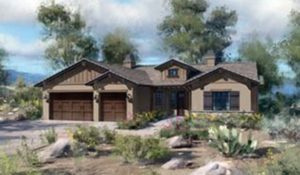If we have the “outdoorsy” part covered, then the “affordability” factor is what we should focus on.
Although inflation continues to be a concern, consumer sentiment remains strong. According to the most recent data from the U.S. Bureau of Labor Statistics, employment numbers are holding steady in our region. Stable employment is good for commerce, generally speaking. But, what does this mean for the housing market in the Quad Cities, and, by extension, the business community as a whole?
According to a joint analysis from The Wall Street Journal and Realtor.com published in July, “All of the top 20 markets in [the] index fall into one of two categories: affordable or outdoorsy.” The Quad Cities has an abundance of outdoor attractions; more lakes than any other city in Arizona, which offer fishing, boating and swimming; hiking, biking and exploring along our extensive trail systems; Prescott is home to the World’s Oldest Rodeo and a vibrant horse culture; our culinary scene includes Master Chefs, farm-to-table retreats and dining options with outdoor patios that can stay open for most of the year.
If we have the “outdoorsy” part covered, then the “affordability” factor is what we should focus on. Record low mortgage interest rates and increased time spent at home during the pandemic resulted in a surge of home buying. This caused a drastic reduction in available homes just as we saw an influx of families relocating to our area from around the country. You can look around and see neighborhoods being developed to try and meet demand, but labor and material shortages continue to impact new construction. Inventory is increasing but is still low, far below expectations. Historically, one of the biggest drivers of price is inventory, and a key reason for higher home prices is that the country is millions of homes short of projected demand. A thriving real estate market is an integral part of the local economy; what supports one supports the other.
There are a few things to keep in mind as we look forward to the 2023 business year:
The recent slowdown will take some time to show up in the price index. According to the monthly housing data provided by the Prescott Area Association of Realtors, median sales prices in 2022 are not increasing as rapidly as last year, but are still increasing. Talk to a licensed realtor if you’re considering listing a property so they can prepare a Comparative Market Analysis (CMA) and place you at the best price point for the current market.
Economists expect home price gains for the foreseeable future. Transitions in the housing market are rarely sudden and dependent on a complex host of factors. Residential, commercial and rental properties are likely to continue gaining value. Your realtor can provide up-to-the-minute market trends to keep you informed.
Many cities are concerned about the strain on resources and are trying to curb development. A big part that local realtor associations play is to advocate, educate and serve to protect private property rights in your community. We build relationships with local leaders, track national legislation and act as an arm of the National Association of Realtors in pursuing grants and campaigns in the public’s best interests.
High demand and low inventory are likely to persist. The current transition in the housing market and its associated effects on the business and residential sectors is likely to continue for some time. A realtor is there to represent your best interests and fiduciary responsibilities. They are licensed, bound by a strict code of ethics, and work for you.
The Quad Cities is an amazing place to buy a home, raise a family, start a business or retire. Regardless of any changes we see in the coming year, that’s one fact that will never change. QCBN
By George Beitzel
To find a REALTOR, visit www.paar.org/find-a-realtor.
George Beitzel is a local realtor and the 2022 president of the Prescott Area Association of Realtors (PAAR). For additional information or to contact PAAR, go to www.paar.org.













